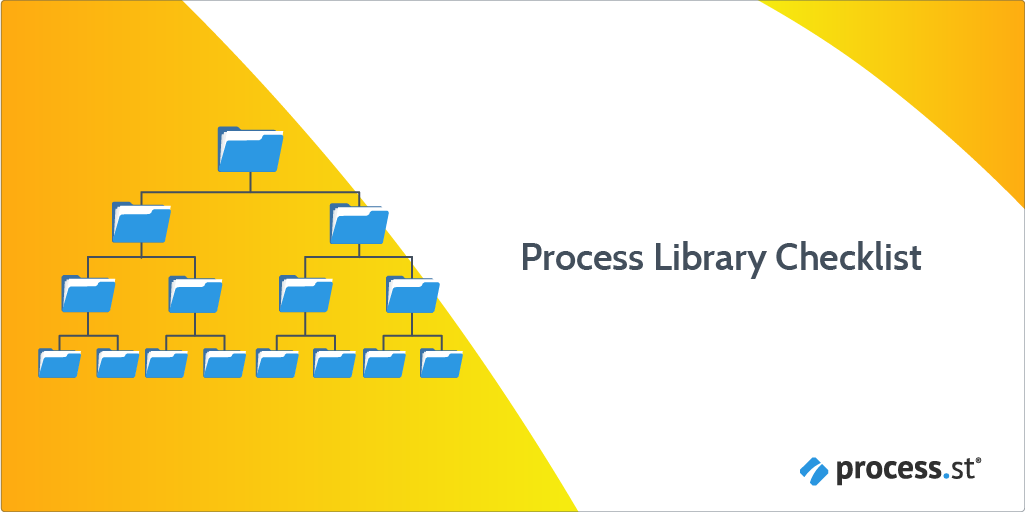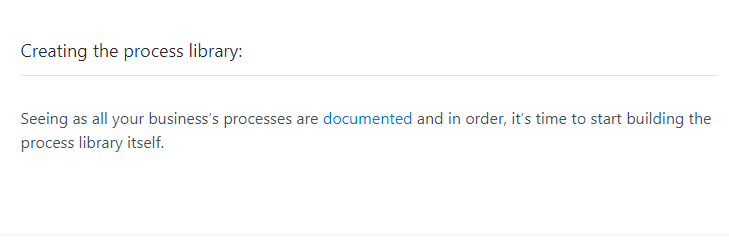Get work done right, and right-on-time with our industry leading BPM platform.
Business Process Management Template: A Secret Weapon for Scalable Success
With hundreds of examples in the gallery, Process Street knows how to build a business process management template.
We understand that devising a successful BPM strategy requires both time and knowledge.
And when it comes to knowledge, we love sharing it.
That’s why we’ve created this page to help you understand what a BPM template is and how it can benefit your business.
We’ll show you how you can take advantage of a process library.
A process library is a great tool to neatly organize processes and keep them all in one place.
Free business process management template
What is a business process management template?
In short, it’s a list of actions you need to perform to monitor, adjust, and review your business operations and methods.
So you can see how easy business process management (BPM) can be, we’re offering this free BPM template.
With this template, you’ll be able to monitor, adjust, and review your business operations and methods – making it easier to streamline and improve all of your internal processes.
Then, by adding our Process Library Checklist, you’ll be able to effortlessly get organized and structure your processes.
Our Process Library Checklist makes it effortless to create and review your company’s process library.
But there’s more!
We’re also giving you (free!) access to our exclusive Complete Guide to Process Management.
It covers all you need to know to start cutting costs and making your processes efficient.
So feel free to download and enjoy!
Business process management steps

Which of your important processes are repeatable?
I bet the answer is “most.”
We know that organizing processes can seem overwhelming, but it doesn’t have to be. The [name of template] is chock full of features that’ll make documenting and improving your processes easier than hitting “reply all” by accident.
Each section of the template guides you through everything you need to do and lays out the benefits of BPM. You just need to do is follow the tasks in order.
Let’s take a closer look at our eight BPM steps so you can get a better idea of how simple it can be:
Step 1: Introduction

The introduction explains the benefits of the workflow and how to use it.
For example, you’ll see how you can:
1. Create a culture of processes in your company
2. Repeat and improve processes quickly
3. Track progress and pull integral data very easily
There’s also a video testimonial from our client, Mainline Autobody, describing how they use Process Street for their processes. It’s a useful resource to learn how our workflow and management systems can help you with everyday tasks.
Step 2: Getting started

Here, you’ll be able to either set up a process library or review process library tasks.
Process Street uses “form fields” to collect or store important data in your workflow, such as files and documents, names, email addresses, and notes.
This means you can store all your documents in one place without leaving the workflow.
You’ll also encounter our conditional logic feature for the first time in this task. Conditional logic lets you create branching pathways within your workflows by using if/then logic.
For example, if you select ”Yes,” conditional logic will adapt this workflow and guide you through the process of setting up a library.
If you select “No”, certain tasks will remain hidden so you don’t have to fill out any irrelevant fields.
Trust me, conditional logic is the best business process management template tool out there!
Step 3: Double-checking processes

This step, again, utilizes conditional logic.
This is the stage in your business process management process where you’ll be able to assign colleagues to the workflow.
It’ll make it easier for everyone to know what to do and when.

Task assignments are great, because they will notify users when tasks are due. You can then track progress of all workflows/tasks right from the dashboard!
Step 4: Approving added processes

Next up, we’ve got approvals.
Approvals help set up a structure for your approval process and save you heaps of time. Hand-offs will become much quicker and less complicated than ever before.
Here, you’ll review your processes to see if they have been documented.
Again, you’ll either choose “Approve” or “Reject,” and new tasks will appear accordingly.
A useful feature of approvals are comments. Comments can be added when a task is rejected so the task owner knows what to fix.
We’ll go into more detail about approvals later in the post. You can skip directly to that section here.
Step 5: Creating the process library

Once all your processes have been documented, you can now get your hands dirty and start building the process library.
You’ll be able to:
- Plan out the process library’s architecture
- Create the process library’s main folder
- Add appropriate subfolders
And there’s a great place to store all your folders. Using Pages allows you to create a centralized hub for a process library. You can learn more about how Pages can help you out here.
Step 6: Optimizing the process library

Since you’ve laid out the foundations, documented your processes, and created folders, you may now optimize your library.
You’ll have three steps to take here:
- Establish a tagging system (to help you search and navigate through all your processes)
- Set user access permissions (for security reasons, you’ll only want certain users to access your processes)
- Move processes into appropriate folders (pretty self-explanatory!)
Step 7: Revealing the process library

You’ll want to let everyone in the company know that you’ve planned and implemented a fully functional library.
An easy way to do that would be by using the “email widget” feature.
The email widget lets you add pre-written emails to your workflow runs, enabling you to send a pre-made email from Process Street to the whole company.
You may also benefit from the Slack integration.
This integration allows you to send automated messages to a Slack channel, either when a task is checked or when a workflow run is completed.
Here are some suggestions of what to include in your message:
- Explain what the process library is
- Where the process library can be found
- How to use the process library
- What to do if anyone has further suggestions

Congrats, this is the last step in your journey!
But before you open that bottle of bubbly and celebrate, don’t forget that processes and procedures need to be reviewed regularly.
So take some time to go through the last few steps to complete the checklist. But keep in mind that following feedback, you may have to make some changes.
And if you’re enjoying your free template, you may also like our all-inclusive, no-code software.
Business process template use cases

Now that you’ve seen how the template works, let’s look at a few cases you could use it for:
Use case A: Employee onboarding
Employee onboarding is a key component of any business. Unfortunately, it’s also one of the more complex ones.
That’s where BPM templates come in!
By using BPM workflows in your employee onboarding, you’ll be able to:
- Gather personal information
- Fill out employment forms
- Request references
- Set up benefits and payroll
All this will significantly reduce the time spent onboarding new staff into your organization.
The result?
Faster onboarding, reduced new hire churn, and improved performance!
Use case B: Travel authorizations
As any good secretary or PA knows, collecting, chasing, and filling out travel forms is a mundane task.
A BPM template won’t make it more exciting but can make it less of a chore.
With a suitable workflow, you’ll be able to easily submit forms, gather signatures, and issue invoices – all from a single template!
Business process template automation
Automating business processes is one of the best things you can do to save time.
Why? Because it’ll make processes quicker, smoother, and smarter.
For example, let’s look at approvals.

Presume that Robert, Laura, and Benjamin all need a vacation.
Typically, it would take some time for them to file a request, for that request to end up on your desk, and then for you to approve it.
Thanks to automations, the whole process takes less than 5 minutes.
All they have to do is run a “Vacation workflow” and choose what dates they want to be off on.
Then, you’ll receive an instant notification of a vacation request. Simply open the workflow and either approve or reject the request.
It’s that easy!
So if you approve Laura’s vacation, she’ll be instantly notified and can start booking that all-important flight to Hawaii.
You can then decide to reject Benjamin’s request, and he’ll be instantly notified, too. But he probably won’t be very happy about your decision.
You can always leave a comment in his workflow saying he can pick another date (that should cheer him up).
Business process template optimization
Optimizing internal processes doesn’t have to be a daunting task.
If you use our Complete Guide to Process Management, you’ll be on your way to improved and streamlined processes in no time.
When it comes to optimization, our template will:
- Walk you through how to create a functional process library
- Simplify the approval process
- Improve transparency about internal processes
- Create a system of continuous improvement so your processes stay effective







 Workflows
Workflows Projects
Projects Data Sets
Data Sets Forms
Forms Pages
Pages Automations
Automations Analytics
Analytics Apps
Apps Integrations
Integrations
 Property management
Property management
 Human resources
Human resources
 Customer management
Customer management
 Information technology
Information technology


